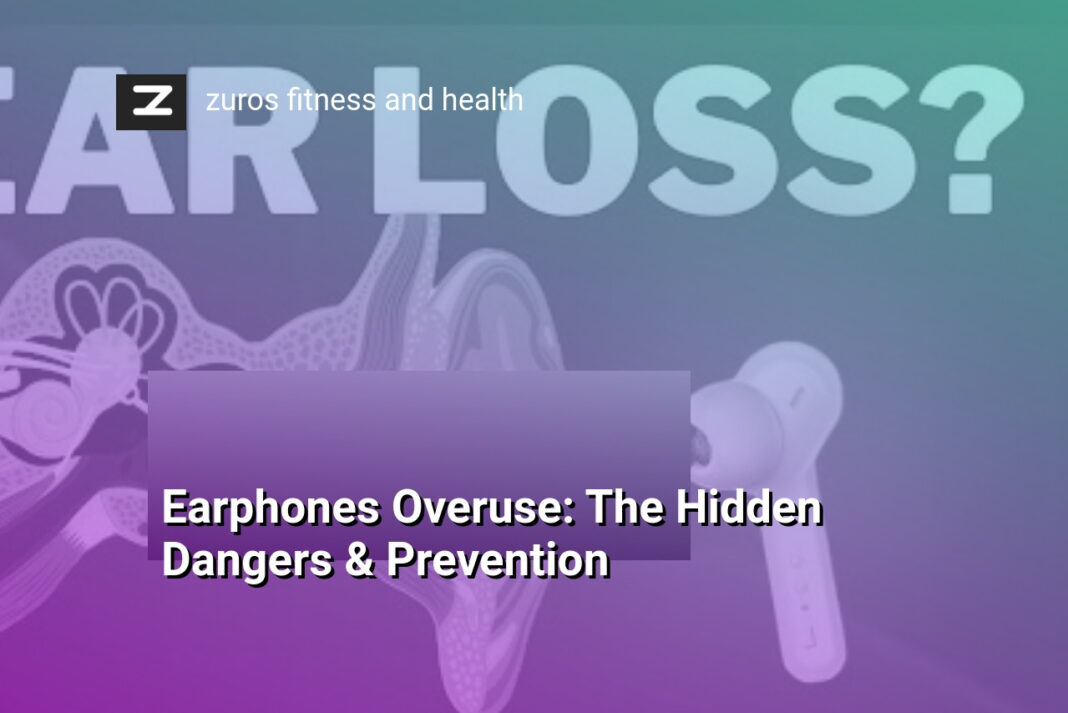The Bottom Line:
Here is a summary of the main points in the requested format:
- I learned that wearing in-ear earphones for extended periods can lead to potential side effects like hearing loss, ear infections, impacted ear wax, and tinnitus. It’s important to be aware of these risks.
- To prevent damage to my hearing, I should keep the volume of my earphones at no more than 60% of the maximum level and take regular breaks every hour to let my ears rest.
- Cleaning my earphones regularly with a soft, dry cloth can help prevent bacteria buildup and ear infections. For stubborn grime, I can use a slightly damp cloth with mild soap.
- Noise-cancelling earphones can be beneficial as they allow me to listen at lower volumes while still hearing my audio clearly, thus reducing the impact on my ear health.
- As an alternative to in-ear earphones, I might consider using over-ear headphones, especially for extended listening periods, as they sit around my ears rather than directly in the ear canal.
The Ubiquity of In-Ear Earphones: A Modern-Day Conundrum
The Prevalence of In-Ear Earphones in Modern Society
In-ear earphones have become an integral part of our daily lives. Whether we’re commuting to work, studying, or simply trying to escape the hustle and bustle of the world around us, these tiny buds have become our constant companions. It’s not uncommon to see people walking down the street, sitting on public transport, or even working out at the gym with earphones nestled snugly in their ears.
The convenience and portability of in-ear earphones have made them incredibly popular. They allow us to take our music, podcasts, and audiobooks with us wherever we go, providing a soundtrack to our lives. With the rise of smartphones and other mobile devices, in-ear earphones have become even more ubiquitous, as they allow us to stay connected and entertained on the go.
The Potential Risks of Prolonged In-Ear Earphone Use
However, as with any technology that we use extensively, there are potential risks associated with prolonged in-ear earphone use. One of the most significant concerns is the impact on our hearing. When we wear earphones for extended periods, we expose our ears to a constant stream of sound, which can lead to noise-induced hearing loss over time.
Studies have shown that prolonged exposure to loud noise can cause permanent damage to the delicate hair cells in our ears, leading to hearing loss. This is particularly concerning when it comes to in-ear earphones, as they sit directly in the ear canal, delivering sound at a much closer proximity to the eardrum than other types of headphones.
The Need for Awareness and Moderation
Despite the potential risks, many people remain unaware of the dangers of prolonged in-ear earphone use. It’s easy to get lost in our favorite tunes or engrossed in an audiobook, losing track of time and exposing our ears to extended periods of sound.
This is where the need for awareness and moderation comes in. Just like any other activity, it’s important to use in-ear earphones in moderation and to take regular breaks to give our ears a rest. Experts recommend following the 60/60 rule – limiting earphone use to 60 minutes at a time and keeping the volume at no more than 60% of the maximum level.
By being mindful of our earphone habits and taking steps to protect our hearing, we can continue to enjoy the convenience and entertainment that in-ear earphones provide without putting our long-term ear health at risk.
Exploring the Potential Side Effects of Prolonged Earphone Use
Hearing Loss: A Gradual and Irreversible Side Effect
Prolonged exposure to loud noise through in-ear earphones can lead to noise-induced hearing loss, a type of hearing loss that occurs gradually over time. As the ears are constantly subjected to high volume levels, the delicate hair cells in the inner ear become damaged, leading to difficulty in hearing certain sounds or understanding speech. Unfortunately, once hearing loss occurs, it is irreversible, making it crucial to prevent damage before it’s too late.
Increased Risk of Ear Infections
Wearing in-ear earphones for extended periods creates a warm, moist environment within the ear canal, which is an ideal breeding ground for bacteria. This increased bacterial growth can lead to ear infections, especially if earphones are shared among multiple users. Left untreated, ear infections can cause more severe health issues, such as permanent hearing loss or even meningitis. To minimize the risk of infections, it is essential to keep earphones clean and avoid sharing them with others.
Impacted Earwax and Tinnitus
The ear naturally produces wax to protect the ear canal from dust, dirt, and bacteria. However, when in-ear earphones are constantly worn, they can push the wax deeper into the ear, causing it to become impacted. Symptoms of impacted earwax include earache, tinnitus (ringing, buzzing, or roaring noise in the ears), and temporary hearing loss. Tinnitus can also be caused by exposure to loud noise, which is a common occurrence when users crank up the volume on their earphones to unsafe levels. In some cases, tinnitus can be incredibly frustrating and debilitating, significantly impacting an individual’s quality of life.
Preventing Ear Damage: Tips for Safe and Enjoyable Listening
Understand the Risks of Prolonged Earphone Use
Prolonged exposure to loud noise from in-ear earphones can lead to noise-induced hearing loss. This type of hearing loss happens gradually, so you might not notice it at first. However, over time, you may start to find that you’re having trouble hearing certain sounds or understanding people when they talk. Unfortunately, once you’ve lost your hearing, it’s gone for good.
Another potential risk is ear infections. When you wear earphones for extended periods, they can create a warm, moist environment that’s perfect for bacteria to grow. If you’re sharing your earphones with others, you’re also sharing bacteria, which can increase the risk of developing an ear infection. Left untreated, these infections can lead to more serious health problems like permanent hearing loss or even meningitis.
Practice Safe Listening Habits
To prevent hearing damage, it’s recommended to keep your volume at no more than 60% of the maximum. It might seem a little quiet at first, but your ears will thank you in the long run. If you’re in a noisy environment and need to turn up the volume to hear your music, consider using noise-cancelling earphones. These gadgets help to reduce ambient noise so you can enjoy your music at a safer volume.
It’s also important to take regular breaks from your earphones. Just like how your body needs rest after a strenuous workout, your ears need a break after being bombarded with sound. It’s a good rule of thumb to take a break every hour or so. During this time, let your ears breathe and listen to the world around you.
Keep Your Earphones Clean and Consider Alternatives
Earphones, especially in-ear ones, can harbor bacteria and ear wax. This can lead to ear infections if not properly addressed. Therefore, it’s essential to clean your earphones regularly. Use a soft, dry cloth to gently wipe the earbuds. For more stubborn grime, you can use a slightly damp cloth with a bit of mild soap. Just make sure to dry them thoroughly before using them again.
If you use headphones for extended periods, it might be worth considering an alternative to in-ear headphones altogether. Over-ear headphones sit around your ear, not in it, which can reduce the direct impact on your ear canal. Plus, many models offer excellent sound quality and noise cancellation, so you’re not sacrificing on your listening experience.
Beyond Volume Control: Additional Strategies for Ear Health
Keeping Your Earphones Clean: A Crucial Step for Ear Health
While volume control and taking regular breaks are essential strategies for maintaining ear health, keeping your earphones clean is equally important. In-ear earphones, in particular, can harbor bacteria and ear wax, which can lead to ear infections if not properly addressed. To prevent this, it’s crucial to clean your earphones regularly.
Use a soft, dry cloth to gently wipe the earbuds. For more stubborn grime, you can use a slightly damp cloth with a bit of mild soap. Just make sure to dry them thoroughly before using them again. Remember, a clean earphone is a happy earphone!
The Benefits of Noise-Cancelling Earphones
Noise-cancelling earphones can be a game-changer for your ear health. While it may seem counterintuitive, these earphones can actually help you keep your volume at a safe level. They work by reducing the amount of ambient noise that reaches your ears. With less background noise, you can listen at a lower volume while still hearing your audio clearly.
This can be particularly beneficial in noisy environments, such as on a busy street or in a crowded office. Instead of cranking up the volume to drown out the noise, noise-cancelling earphones allow you to enjoy your audio at a safer, more comfortable level.
Considering Over-Ear Headphones as an Alternative
If you’re someone who uses earphones for extended periods, it might be worth considering over-ear headphones as an alternative. These headphones sit around your ear, not in it, which can reduce the direct impact on your ear canal. Many models offer excellent sound quality and noise cancellation, so you’re not sacrificing on your listening experience.
However, it’s important to remember that no matter what type of headphone you use, it’s crucial to give your ears regular breaks. Every hour or so, take off your headphones for at least 5 minutes. This gives your ears a chance to rest and recover.
By incorporating these strategies alongside volume control and regular breaks, you can significantly mitigate the risks associated with long-term earphone use. So go ahead, enjoy your music, podcasts, and audiobooks – but do it wisely. Your ears will thank you in the long run.
Striking a Balance: Enjoying Audio While Protecting Your Hearing
Understanding the Risks and Finding the Right Balance
While in-ear earphones offer a convenient and immersive audio experience, it’s crucial to understand the potential risks associated with prolonged use. Excessive exposure to loud noise can lead to noise-induced hearing loss, a gradual and often unnoticeable condition that can result in permanent damage. Additionally, wearing earphones for extended periods can create a warm, moist environment that fosters bacterial growth, increasing the risk of ear infections. It’s essential to strike a balance between enjoying your audio and protecting your hearing health.
Practical Tips for Safe Earphone Usage
To minimize the risks associated with prolonged earphone use, consider implementing some practical tips. First and foremost, adhere to the 60/60 rule: limit your earphone usage to no more than 60 minutes at a time, at no more than 60% of the maximum volume. This allows your ears to rest and recover between listening sessions. When in noisy environments, opt for noise-cancelling earphones, which reduce ambient noise and allow you to enjoy your audio at a safer volume. Additionally, make sure to clean your earphones regularly to prevent the buildup of bacteria and ear wax, which can lead to infections.
Exploring Alternatives and Prioritizing Hearing Health
While in-ear earphones are incredibly popular, it’s worth considering alternatives that may be less damaging to your hearing. Over-ear headphones, which sit around your ears rather than inside them, can reduce the direct impact on your ear canal and often provide excellent sound quality and noise cancellation. However, regardless of the type of headphones you choose, it’s crucial to prioritize your hearing health by taking regular breaks, keeping the volume at a reasonable level, and scheduling routine hearing checks with a healthcare professional. By making these simple adjustments and being mindful of your habits, you can continue to enjoy your favorite audio content while safeguarding your precious sense of hearing.





